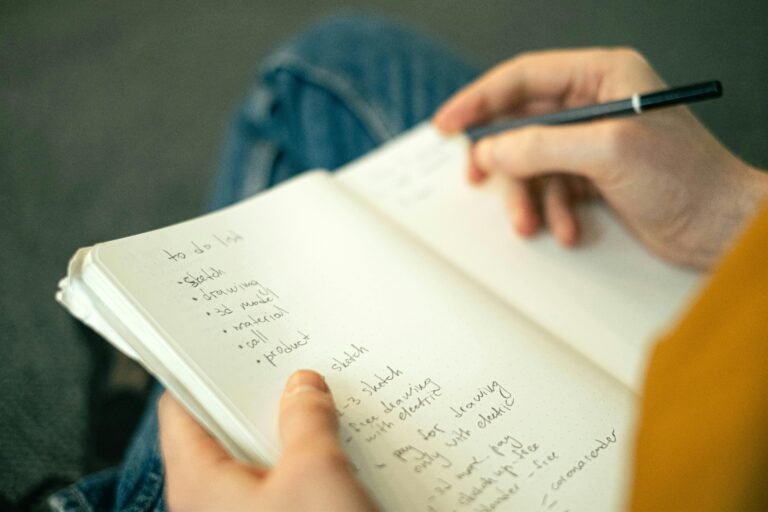Everyone says self-care is important. Take a shower. Drink water. Clean your space. But if you have ADHD, even the most basic self-care tasks can feel like climbing a mountain.
It’s not because you don’t care. It’s not because you’re lazy. It’s because your brain is running a different operating system. One that doesn’t always respond to structure, routine, or motivation in the way other people expect.
So let’s talk about it. Why is self-care so hard with ADHD, and what can you do to make it a little easier?
What Self-Care Looks Like With ADHD
For many people, self-care means bubble baths, yoga, or journaling. For someone with ADHD, self-care can mean:
• Brushing your teeth every day
• Doing laundry before it becomes an emergency
• Eating something that isn’t a granola bar
• Taking a shower when your body feels heavy
• Responding to that one text from a week ago
• Scheduling a doctor appointment you’ve been avoiding
• Cleaning up the pile of stuff that keeps migrating across your room
It’s the stuff that keeps you functioning. And when ADHD gets in the way, it becomes overwhelming fast.
Why It’s So Difficult
ADHD messes with executive function, the part of the brain responsible for planning, organizing, remembering, and getting started on things. That means:
• You forget what needs to be done until it’s urgent
• You get stuck starting even the smallest task
• You hyperfocus on one thing and ignore everything else
• You feel mentally exhausted before you even begin
• You avoid tasks because of shame or fear of failure
Self-care isn’t hard because you don’t want to do it. It’s hard because your brain has a hard time initiating and following through on things that feel boring, repetitive, or emotionally heavy.
Step One: Rethink What Counts as Self-Care
Self-care doesn’t need to be perfect. It doesn’t need to look like what everyone else is doing.
Some valid forms of self-care with ADHD:
• Changing into clean clothes, even if they’re just different pajamas
• Eating a snack, even if it’s not a full meal
• Turning off lights to reduce stimulation
• Lying down and letting your body rest for 10 minutes
• Using dry shampoo when you can’t shower yet
• Setting a timer and tidying one surface
Doing something is better than doing nothing. Progress counts, even if it’s messy.
Step Two: Use Visuals and Reminders
If it’s out of sight, it’s out of mind. ADHD brains need cues and structure that make the invisible visible.
Try:
• Sticky notes on mirrors
• Whiteboards with simple checklists
• Habit tracking apps
• Color-coded task cards
• Alarms on your phone with encouraging labels
Visual reminders take the pressure off your memory and give your brain a nudge without guilt.
Step Three: Break It Down Into Tiny Steps
“Clean your room” is not a task. It’s a category. ADHD brains get overwhelmed by vague instructions.
Instead of saying “I need to shower,” break it into micro steps like:
• Go to the bathroom
• Turn on the water
• Get undressed
• Stand under water
• Wash hair
• Use towel
Even smaller if needed. Celebrate each step. Each one is a win.
Step Four: Pair Tasks With Stimulation
ADHD brains love dopamine. When you attach something fun or interesting to a boring task, it becomes more doable.
Try:
• Watching a show while folding laundry
• Playing upbeat music while cleaning
• Calling a friend while cooking
• Using a countdown timer with a reward at the end
• Turning daily routines into challenges or games
You are not cheating by making it fun. You are giving your brain what it needs to function.
Step Five: Build Routines That Flex With You
Routines don’t need to be perfect. In fact, ADHD-friendly routines are the ones that bend without breaking.
• Morning routines can be three steps instead of ten
• Evening checklists can live on your phone
• Reset days can help you catch up without guilt
• Task batching can keep you from switching too often
Make your routine fit you, not the other way around.
Step Six: Ask for Help Without Shame
Self-care doesn’t have to be a solo activity. You can ask for help with:
• Setting reminders
• Body doubling while doing hard tasks
• Talking through routines out loud
• Having someone check in gently
You’re not weak for needing help. You’re human. And community care is just as real as self-care.
Step Seven: Let Go of All-or-Nothing Thinking
Self-care is not all or nothing. You don’t have to do everything to feel better. You can do one thing. Just one.
One glass of water. One corner of the desk. One load of laundry. One text sent.
That’s not failure. That’s progress.






